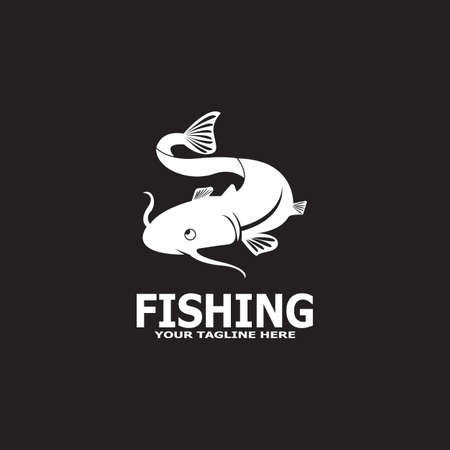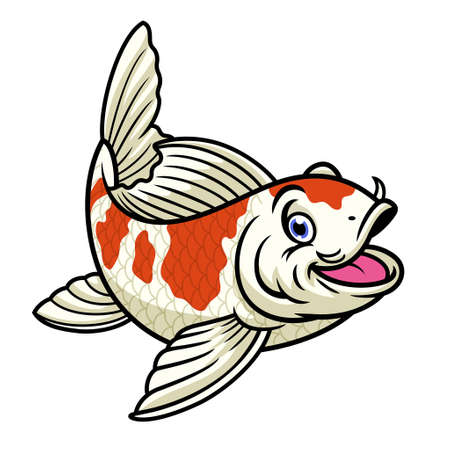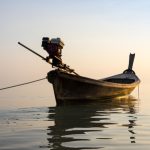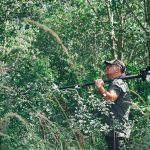1. Understanding the Three Main Trout Species
If youre new to trout fishing, one of the first things you should learn is how to tell the three main species apart: Rainbow, Brown, and Brook trout. Each type has its own look, personality, and favorite hangout spots. Knowing these differences can help you decide where to fish, what bait to use, and how to approach your catch.
Rainbow Trout
Rainbow trout are probably the most well-known of the three. They’re called “rainbow” for a reason—these fish have a pinkish stripe running down their sides and a shiny, silver body. Theyre often found in clear, cold rivers and lakes across the U.S., especially in stocked waters because they adapt easily.
Key Traits:
- Color: Silvery body with a pink or red stripe
- Habitat: Cold rivers, streams, and lakes; often stocked
- Behavior: Active feeders; often jump when hooked
Brown Trout
Brown trout are a bit more elusive than rainbows. They have a golden-brown color with black and sometimes red spots. These fish are known to be more selective eaters and can be tricky to catch. They prefer deeper pools and undercut banks in rivers or shaded areas in lakes.
Key Traits:
- Color: Golden-brown with dark and reddish spots
- Habitat: Cooler waters with good cover like rocks or logs
- Behavior: Wary and harder to fool; active during low light times
Brook Trout
The brook trout isn’t technically a true trout—it’s actually part of the char family—but its still grouped with them by most anglers. These fish are smaller on average but have beautiful markings: olive-green bodies with worm-like patterns on their back and bright red belly fins trimmed in white.
Key Traits:
- Color: Olive-green with yellow spots and red belly fins outlined in white
- Habitat: Cold, clean mountain streams and small creeks
- Behavior: Aggressive feeders; often the first to bite
Trout Species Comparison Table
| Species | Appearance | Main Habitat | Behavior |
|---|---|---|---|
| Rainbow Trout | Silvery body with pink/red stripe along side | Lakes, rivers; commonly stocked waters | Eager feeders; fight hard when hooked |
| Brown Trout | Golden-brown with black/red spots | Cooler water with structure (rocks/logs) | Cautious; prefers early morning/evening hours |
| Brook Trout | Olive-green with light spots; red fins edged in white | Crisp mountain streams and creeks | Aggressive and quick to strike lures or flies |
By understanding what makes each trout unique—from where they live to how they behave—you’ll be better prepared when you hit the water. Whether youre casting into a mountain stream or fishing from shore at your local lake, knowing your target gives you an edge every time.
2. Essential Gear and Tackle for Trout Fishing
If youre just getting started with trout fishing, having the right gear can make all the difference. Whether youre targeting rainbow, brown, or brook trout in rivers, streams, or lakes across the U.S., this guide will walk you through the basic equipment every beginner needs to get started confidently.
Rods and Reels: What to Look For
When it comes to trout fishing, lightweight gear is key. You’ll want a rod that gives you sensitivity to feel the bite but also enough strength to handle a decent-sized trout.
| Gear | Recommended Specs for Beginners | Why It Works |
|---|---|---|
| Rod | Ultralight to Light power, 5’6”–7’ spinning rod | Offers sensitivity and control, ideal for smaller rivers and streams |
| Reel | Size 1000 to 2500 spinning reel | Lightweight and easy to use for casting light lures |
Fishing Line: Keep It Light
Trout have excellent vision and are easily spooked by heavy line. A thinner line helps present your bait more naturally in clear water conditions.
Best Line Types for Beginners:
- Monofilament (4–6 lb test): Easy to handle and budget-friendly—great for most beginners.
- Fluorocarbon (4–6 lb test): Nearly invisible underwater—ideal for pressured waters with spooky trout.
Lures and Baits That Catch Trout
You don’t need a massive tackle box when starting out. Stick with proven options that work well across different environments.
| Lure Type | Examples | Best Used In |
|---|---|---|
| Spinners | Rooster Tail, Panther Martin | Streams and small rivers; great for active fish |
| Spoons | Kastmaster, Little Cleo | Lakes or deeper pools; mimics injured baitfish |
| Bait | Worms, salmon eggs, PowerBait | Ponds and stocked lakes; especially effective with kids or new anglers |
Tackle Box Essentials
A small tackle box with organized compartments will keep your gear tidy and accessible. Here are some must-haves:
- Hooks (sizes #8 to #14)
- Split shot weights (for adjusting depth)
- Snap swivels (to prevent line twist)
- Bobbers or strike indicators (especially helpful for bait fishing)
- Nail clippers or line cutters
- Pliers or forceps (for hook removal)
Dressing for Success: Wear the Right Apparel
If youre heading into cold mountain streams or hiking along riverbanks, comfort matters. Here’s what many U.S. anglers rely on:
- Waders: Chest waders help keep you dry while navigating rivers.
- Fishing vest or pack: Keeps tools and tackle within easy reach.
- Sunglasses: Polarized lenses reduce glare so you can see fish better in the water.
The Bottom Line on Gear:
You don’t need to spend a fortune to start trout fishing. Focus on quality beginner-friendly gear that matches the waters you plan to fish. As your skills grow, you can always upgrade later.

3. Best Baits and Lures for Each Trout Species
Choosing the right bait or lure can make a huge difference when targeting different trout species. Each type of trout—rainbow, brown, and brook—has its own preferences based on their natural diet and behavior. In this section, we’ll break down the most effective natural and artificial baits for each species, along with tips on how and when to use them.
Natural Baits That Work
Natural baits are a great option for beginners because they mimic what trout naturally eat in the wild. Here’s a quick guide:
| Trout Species | Top Natural Baits | Best Time to Use | Tips |
|---|---|---|---|
| Rainbow Trout | Worms, Salmon Eggs, Corn | Early morning or late afternoon | Use light line and let the bait drift naturally with the current. |
| Brown Trout | Minnows, Crickets, Nightcrawlers | Dawn or dusk during cooler months | Fish near cover like fallen trees or undercut banks. |
| Brook Trout | Insects, Worms, Grubs | Spring and fall mornings | Cast upstream in small creeks or mountain streams. |
Artificial Lures That Get Results
If you prefer using lures, there are plenty of proven options that work well for all three trout species. Lures allow you to cover more water quickly and often trigger reaction strikes.
| Trout Species | Effective Lures | Best Conditions | Lure Tip |
|---|---|---|---|
| Rainbow Trout | Inline spinners (like Rooster Tail), Spoons (like Kastmaster) | Clear water with moderate flow | Use bright colors like pink or chartreuse on cloudy days. |
| Brown Trout | Crankbaits, Jerkbaits, Soft plastics (like swimbaits) | Muddy or low-light conditions | Mimic injured baitfish with erratic retrievals. |
| Brook Trout | Tiny spoons, Panther Martin spinners, Dry flies (in fly fishing) | Shallow creeks or alpine streams | Go small and subtle; brookies are easily spooked. |
When to Choose Bait vs. Lure?
If youre fishing in stocked lakes or slower-moving rivers, natural bait is often your best bet—especially for beginners. But if youre covering a lot of ground or fishing moving water, lures help you reach more fish faster. Try both methods on your next trip and see what works best in your local waters!
Pro Tip:
No matter which bait or lure you choose, always check local regulations. Some areas have restrictions on bait types or require barbless hooks for catch-and-release fishing.
The key to successful trout fishing is understanding what each species likes and adjusting your approach based on water conditions and time of day. By matching the right bait or lure to the right situation, youll boost your chances of landing that first—or next—beautiful trout!
4. Basic Techniques Every Beginner Should Know
If youre just starting out with trout fishing, learning a few essential techniques will make your experience much more enjoyable—and successful. Whether youre targeting rainbow, brown, or brook trout, mastering the basics like casting, drifting, and retrieving is key. These methods can be adjusted depending on where youre fishing and how trout behave in that environment.
Casting: Getting Your Line Where It Needs to Be
Casting might seem simple, but doing it right makes a big difference. For trout fishing, youll typically use either spinning gear or fly fishing equipment. Heres a quick comparison:
| Gear Type | Best For | Ease of Use |
|---|---|---|
| Spinning Rod & Reel | Lakes, rivers with less cover | Easy for beginners |
| Fly Rod & Reel | Streams, rivers with overhanging trees | Takes practice to master |
When casting, aim for areas where trout are likely hiding—near rocks, logs, undercut banks, or shaded spots.
Drifting: Letting Your Bait Move Naturally
Drifting means letting your bait or lure move along with the current in a natural way. Trout are more likely to bite when food looks like its just floating by. Here’s how to do it:
- Cast upstream and let your bait drift down toward you.
- Keep your line tight enough to feel bites but loose enough not to drag the bait.
- Use split shot weights if needed to keep your bait near the bottom where trout often feed.
This method works great in moving water like rivers and streams.
Retrieving: Bringing It Back With Action
If you’re using artificial lures like spinners or spoons, retrieval is important. Youre trying to mimic an injured baitfish or insect. Try these retrieval styles:
| Retrieve Type | Description | Best For |
|---|---|---|
| Steady Retrieve | Reel in at a constant speed | Lakes and ponds with active fish |
| Stop-and-Go | Reel a bit, pause, then reel again | Triggering strikes from hesitant trout |
| Twitching Retrieve | Add small rod jerks while reeling in | Mimicking injured prey in clear water |
The key is to experiment and see what the trout are responding to that day.
Match Technique to Environment and Species
The best technique can vary based on where you’re fishing and which type of trout you’re after. Heres a quick guide:
| Trout Species | Preferred Habitat | Recommended Technique |
|---|---|---|
| Rainbow Trout | Lakes, fast-moving streams | Casting and drifting with live bait or lures |
| Brown Trout | Sheltered rivers, undercut banks | Twitching retrieve with crankbaits or flies near structure |
| Brook Trout | Cool mountain streams with clear water | Casting light lures or dry flies upstream with slow drift back down |
No matter where youre fishing or what youre targeting, these basic techniques will help build your skills and boost your chances of hooking that first (or next) trout!
5. Where and When to Fish for Trout in the U.S.
If youre just starting out with trout fishing, knowing where and when to fish is just as important as the gear you use. Across the United States, different regions offer unique trout fishing experiences. Whether youre after rainbow, brown, or brook trout, understanding seasonal patterns and top locations can make a huge difference in your success.
Top Trout Fishing Locations in the U.S.
The U.S. is home to a variety of trout habitats—from cold mountain streams to large stocked lakes. Here are some popular spots known for great trout fishing:
| Location | State | Trout Species | Best Time to Fish |
|---|---|---|---|
| Yellowstone River | Montana | Rainbow, Brown, Cutthroat | June to September |
| White River | Arkansas | Rainbow, Brown | Year-round (best in spring and fall) |
| Beaverkill River | New York | Brown, Brook | April to June, September to October |
| Truckee River | Nevada/California | Rainbow, Brown | March to May, September to November |
| South Platte River | Colorado | Rainbow, Brown | Spring and Fall |
Understanding Trout Behavior by Season
The time of year plays a big role in how active trout are and where they can be found. Heres a quick breakdown:
| Season | Behavior & Tips |
|---|---|
| Spring | Cools waters and insect hatches make trout more active. Great for dry fly fishing. |
| Summer | Fish early morning or late evening when water is cooler. Look for shaded areas or deeper pools. |
| Fall | Browns spawn during this time—making them more aggressive and easier to catch. Cooler temps also help overall activity. |
| Winter | Trout are sluggish but still catchable. Use smaller baits and fish slow in deep pools. |
The Importance of Water Temperature and Weather Conditions
Trout thrive in cold, oxygen-rich water—usually between 50°F and 60°F (10°C – 15°C). During hot summer months, they tend to move to deeper or shaded areas. After rainstorms, streams may be muddy, which can affect visibility. However, rising water levels often bring more food into the system, making post-rain days surprisingly productive.
Pro Tip:
If youre planning a trip, check with local fish and game agencies for stocking schedules and stream conditions. Many states like Pennsylvania, North Carolina, and California have up-to-date online maps showing current trout stocking locations.
A Few More Beginner-Friendly Spots:
- Lakes stocked by local parks departments: Great for practicing techniques near home.
- Northern Michigan streams: Known for brook trout in beautiful surroundings.
- Tennessee tailwaters: Cold water below dams offers consistent year-round fishing.
No matter where you live in the U.S., there’s likely a trout stream or lake within driving distance. With a little research on timing and location, youll improve your chances of landing your first—or next—beautiful trout.


